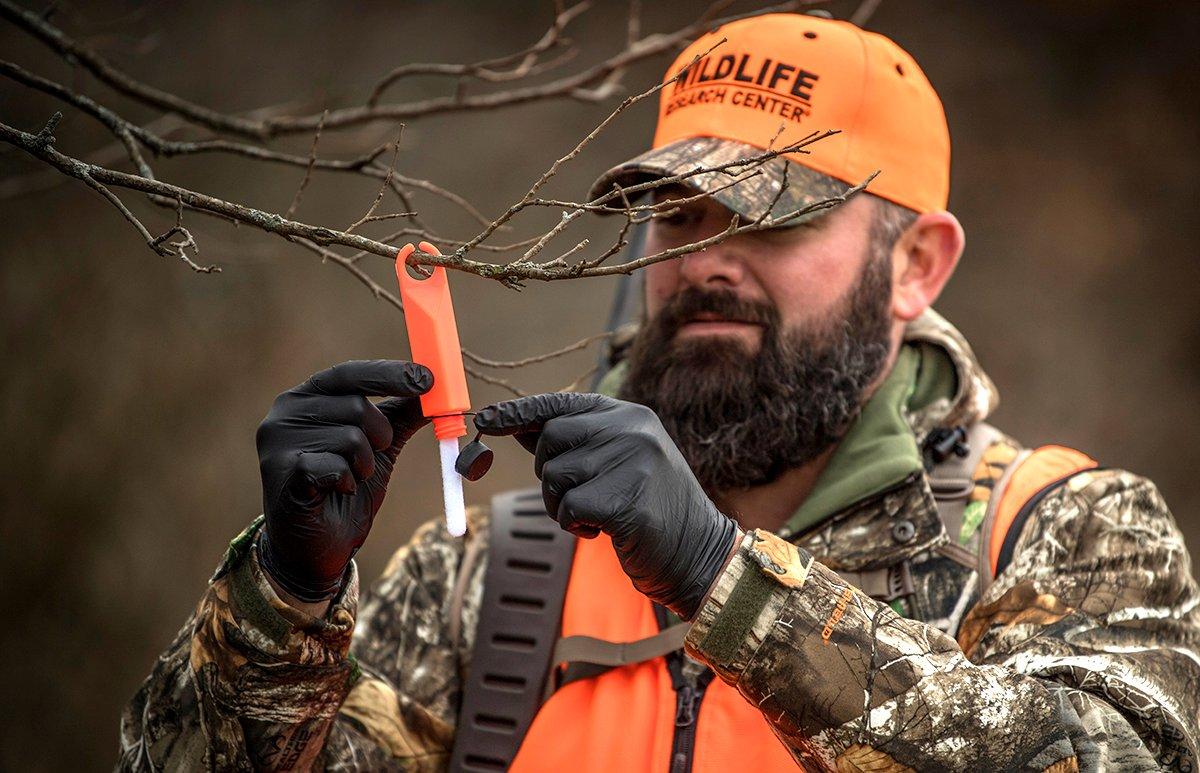December can be one of the best times of year to use doe-in-heat scent — especially with this tactic
B.J. Clement and his son, Todd, are die-hard archers who love to bowhunt into December, even though that is when rifle season starts in Kansas.
Out here where we hunt, the late and second rut can be as good or better than the peak rut, especially when the weather is cold, says B.J.
One December day, B.J., who hunts exclusively from the ground, set a blind in an old farmyard near a milo field. He planned to come back and hunt it a week later, after the area had settled down.
In the meantime, to help his dad out, Todd went to work. He littered the farmyard with scent trails and mock scrapes. He used his favorite commercial doe-in-heat scent and urine he had collected from a buck he'd killed earlier in the year. Todd kept up the ruse for several days, rejuicing the scrapes and trails.
When B.J. sneaked back to his blind one cold afternoon a week later, his eyes popped. More than one buck had rolled into Todd's scent-posts and raked and ripped a slew of new rubs and scrapes.
They'd torn the place up, says B.J. The bowhunter climbed into his blind and sat awhile. A couple of small 8-points wandered by, stopping to sniff the trails and scrapes.
(Don't Miss: Cierra Arrington's 194-inch Crossbow Buck)
As dusk approached, a bigger buck worked along the edge of the milo and cut into the farmyard. He walked in on one of the scent trails, paused to rake a big hedge tree, and crossed within 30 yards of the blind.
B.J. knew the buck was a monster, but he stayed poised and let an arrow fly.
The Clements tracked in the snow and found the buck in a thicket 120 yards away. B.J.'s 12-point typical net-scored 181 7/8.
The motto of the story is simple: Don't put your scent bottles away after the November rut. Your favorite estrous scent can work especially well in early-to-mid December when there are fewer does available for breeding.
Adult does that were not bred to pregnancy in November will cycle into second estrus 26 to 28 days later. In some areas with ample quality food, notably in Kansas and other Midwestern states, 6- to 8-month-old doe fawns that have grown to 70 pounds or so might come into heat for the first time.
The sweet smell of one or two gals of either ilk can bring a big buck running as he hopes for one last fling of the year.
Hang a treestand or set a blind in a new spot near a winter food source, and go to work. First, lay down several realistic scent trails with a double-drag: Tie a scent wick to the end of a 5-foot string; halfway up the cord, tie on a shorter string with another wick. Juice the main drag with buck urine/tarsal, and the second wick with doe-in-heat. Pull the buck-dogging-a-doe ruse straight to your stand or blind, and make a couple of circles out front for good measure.
Along the scent trails and within view of your stand, create a couple of huge mock scrapes beneath low-hanging branches (snap the overhanging twigs for added realism). Pour an equal dose of estrous scent and buck urine/tarsal into the fake scrapes to create the ultimate stink zone.
Sneak in and rejuice the area at least once. Wait a few days for deer to find, sniff, and paw all this stink, then sneak in and hunt the stand. Your first time in will likely be your best shot.
(Don't Miss: You Wounded a Buck. Will he Come Back?)







